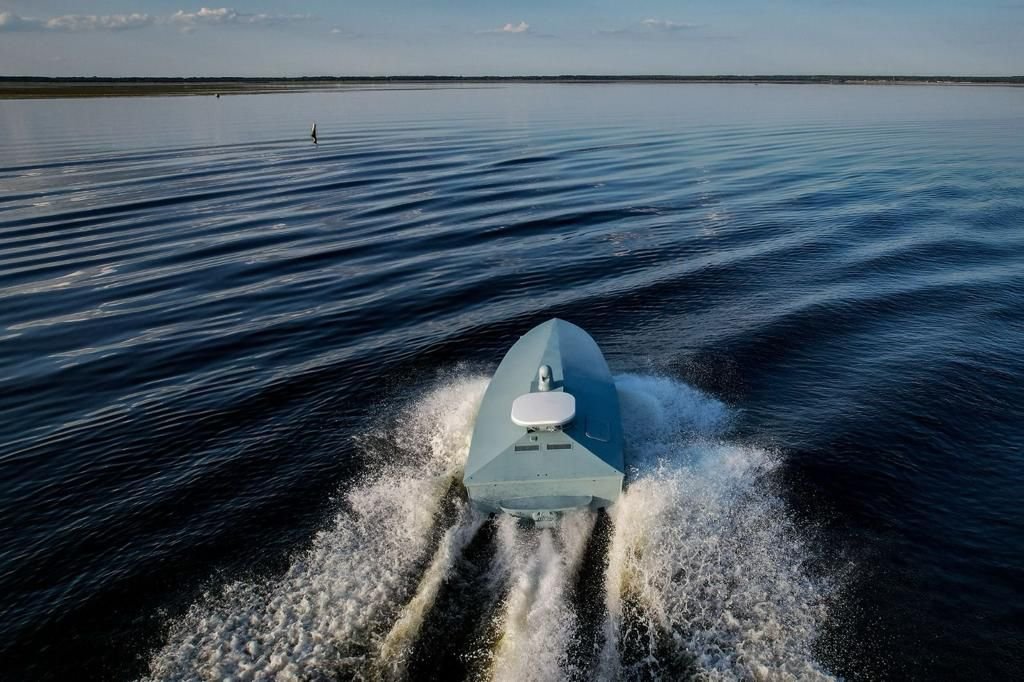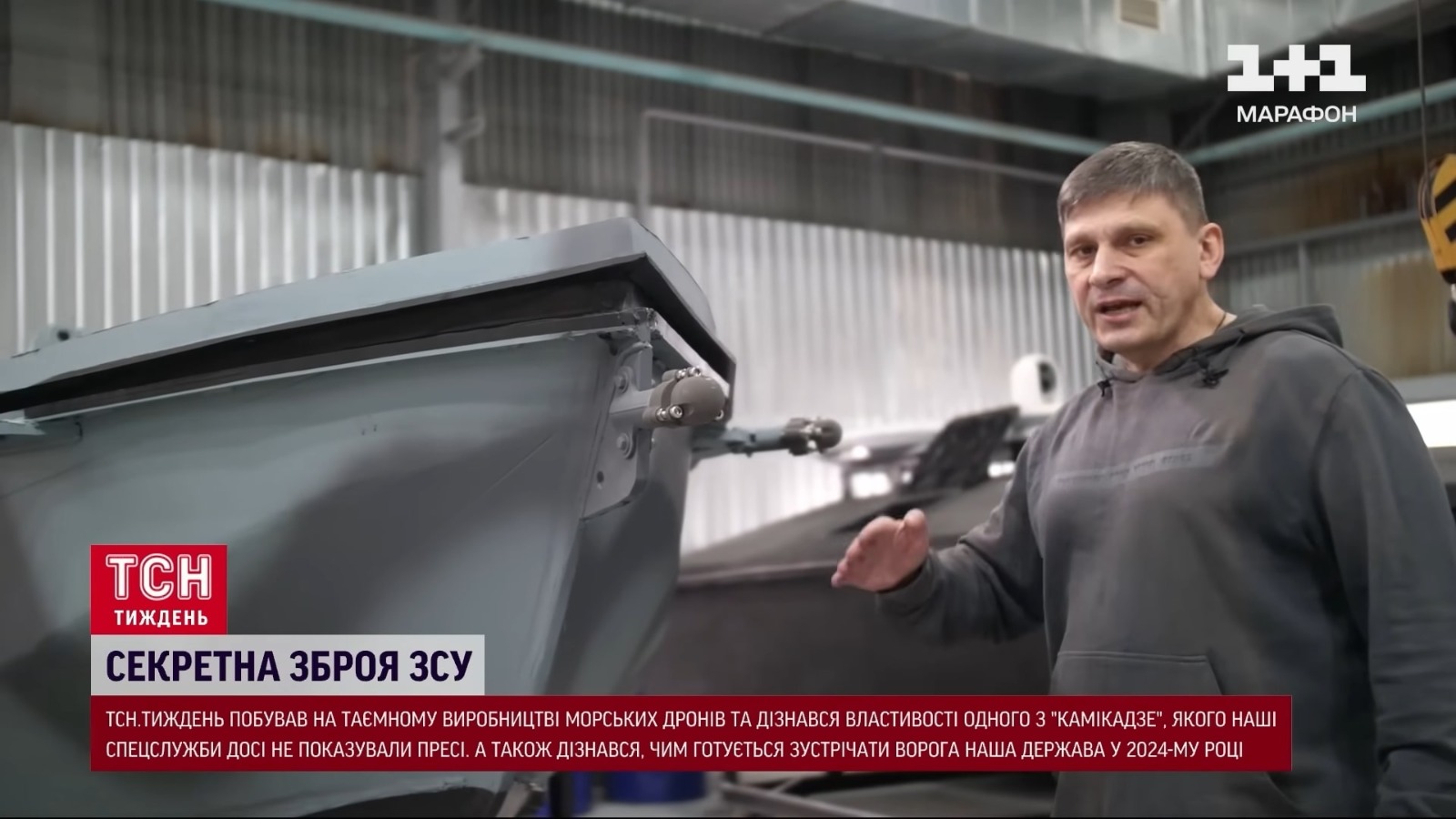The Ukrainian kamikaze drone boat menace in the Black Sea is far from over. Kyiv’s intelligence arm, Security Service of Ukraine (SBU), has unveiled a new killer Unmanned Surface Vessel (USV), the Mamai, billing it as the “fastest” remotely operated system in its unmanned strike inventory.
Ukrainian security officials have claimed that there are plans to even strike the Russian Black Sea Fleet (BSF) at Novorossiysk after it shifted there following the destruction of the BSF headquarters in September using air-launched Storm Shadow missiles.
A Ukrainian news channel featured the Mamai while also interviewing Ukrainian defense industrial and defense authorities, who intriguingly claimed that the suicide USVs could also achieve many “strategic” tasks in Ukraine’s war besides just being a “tactical” threat.
Success on the sea is planned to be leveraged to impact land operations. This largely attests to prior EurAsian Times analysis about Ukrainian calculations and Washington’s vision of reversing Russia’s strategic gains in the war.
Another Addition To Ukraine’s USV Fleet
The Mamai, like the Magura V that washed ashore in Crimea, is sleeker with sharp features. It has a lone electro-optical (EO) system on the top hull, with a flat dish antenna – presumably a Starlink terminal. However, the nature of this feature is unclear, given Elon Musk’s reluctance to be embroiled in a war with Russia.

The report on the TCH channel claimed how the SBU “drove away the Russian fleet from (Ukrainian) shores” after hitting six Russian warships. They claimed this included missile carrier Samun, a Project 22160 Pavel Derzhavin large patrol corvette, a chemical tanker Sig, amphibious assault/landing ship Oleneogorsky Gornyak, navy tugboat Nikolay Mur, and a new reconnaissance ship Vladimir Kaztskyi (Vladimir Kozytskyi).”
The Samum was struck by a Sea Baby USV (featured in an earlier report here) on September 14; the Pavel Derzhavin on October 11; the Sig on August 4-5, which sustained “a hole in the engine room near the waterline”; the Oleneogorsky Gornyak hit by the Mamai on August 4 near the Russian port of Novorossiysk; the Vladimir Kozytskyi on October 26, that reported an “explosion” with smoke billowing from the engine room; and the Professor Nikolay Muru tugboat on October 14.
Notably, none of the ships were sunk, with the description indicating that they sustained light to medium damage. Russian Telegram groups admit the Ukrainian strikes but still maintain that the BSF’s capital and frontline warships are intact, and only severe damage to that inventory can qualify as a Ukrainian victory.
Russia has been using Su-30SM fighters for strafing runs and Kamov Ka-25 naval helicopters as air-to-surface gunfire platforms beside the on-board close-in weapons on the ships. It is also introducing a kamikaze drone for striking small naval targets and a suicide USV of its own, ‘Dandelion,’ for countering the asymmetric threat.
Contribution To Naval Concepts
A Ukrainian official interviewed in the segment said they “turned the very philosophy of approach in naval operations.” The statement represents Kyiv pioneering the use of commercial drones as loitering munitions by strapping them with explosives, which marked a direction in drone warfare that military analysts had not anticipated over the last decade.

The report then showed visuals of USVs like the Magura V, the Sea Baby, and the Mamai maneuvering in the sea, pointing out how the three have different purposes based on their varied speed, range, and explosive capabilities. Ukraine formed the world’s “first separate brigade of maritime drones,” the presenter noted.
The report also showed an interesting configuration of the Mamai’s detonation mechanisms. In the factory unit where the drone boats are manufactured, the camera focuses on the three contact fuses on its hull – one on the nose and one each on either side of the front bow. The presenter presses on the nose contact fuse, which goes in with some resistance.
Naturally, it is free of the explosive payload that would have gone off had it been installed. “Mamai is the fastest object in the Black Sea. It can accelerate up to 110 kilometers an hour. The Russians are actively working to detect unmanned boats even before the start of the attack and destroy them on approach,” said an official interviewed on the spot.
Sea Baby: Most Powerful USV?
As for the Sea Baby, the reporter said the drone’s strike on July 17 on the Crimean Bridge “set off fireworks” (with) almost a ton of explosives under it. “Traffic across the bridge is still complicated and not fully restored.” He added that Sea Baby is “not only a naval kamikaze drone” but also a “modular, multipurpose platform on which various types of remotely controlled weapons are mounted.”
“(It) has been very successfully used in attacks other than the Crimean Bridge,” he added. The capability description is visibly consistent with the Sea Baby’s design, where less consideration has been given to aesthetics and more to a tactical edge. The USV is larger, with more pronounced outfittings of electro-optical systems, sensors, and other payloads.
Future Plans
He added that Ukrainian drones can solve more “strategic tasks” to ensure victory at sea ” and on land.” EurAsian Times had previously reported how NATO and US strategy has been to make “Crimea untenable.”
The thinking here is to harass Russian forces there that loosen its hold on the peninsula, which in theory can be manipulated to oust it from the 20 percent of Ukrainian territory it holds in the east and the south. Ukrainian military sailors are “planning large-scale operations involving various special services and various types of maritime drones” whose existence is “not yet known,” the presenter concludes.
- The author can be reached at satamp@gmail.com
- Follow EurAsian Times on Google News




